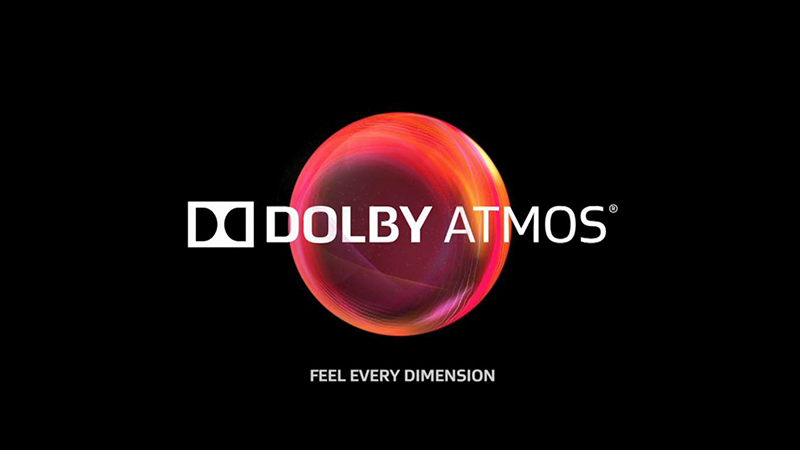
It's now been several years since Dolby Atmos surround sound technology made its way from post-production suites into living rooms, and it has proven to be arguably the most significant and impactful technology in home cinema of the past decade.
Since the very first Dolby Atmos installation in the Dolby Theater in Los Angeles (for the June 2012 premiere of the Disney/Pixar animated film Brave), Dolby Atmos has firmly transitioned from the "future of home cinema audio" to very much the here and now.
That’s not only thanks to the immersive surround sound technology gaining traction in Hollywood but also its support throughout the chain – it runs from content creation and distribution right the way through to hardware and device compatibility. Video streaming services, TVs, AV receivers, soundbars and even phones – you name it, there's a good chance Dolby Atmos is part of the package.
Atmos might not be a part of every cinema experience, but it is available in thousands of picturehouses worldwide. Even better, you can now enjoy the pinpoint-precise surround sound experience at home, whether that’s through an Atmos-enabled AV receiver and speaker package, a Dolby Atmos soundbar or even an Atmos-capable TV. Dolby has more recently developed Dolby Atmos Music, too, powering spatial audio streaming and generally adding a whole new dimension to music listening. Literally.
But what exactly is Dolby Atmos? And what kit do you need to get involved? Allow us to explain...
What is Dolby Atmos?
Atmos is, in Dolby’s own words, “the most significant development in cinema audio since surround sound.” And we would have to agree, really (whilst also recognising that rival DTS:X – a similar object-based surround technology – is also widely used. You can read about the Dolby Atmos vs DTS:X differences here.)
Atmos is a surround-sound technology that was first developed in 2012, expanding upon the existing 5.1- and 7.1-channel surround sound set-ups that have dominated the cinematic audio experience for decades. Atmos notably adds sound coming from overhead, enveloping the audience in a dome of audio, but it also works differently.
Unlike traditional channel-based systems, Dolby Atmos doesn't just send audio at discrete levels to certain speakers. The technology can also produce up to 118 simultaneous sound objects, allowing the sound designer to place each sound and voice in exact points within the sound field rather than simply assign them to specific channels. These objects can be manipulated and moved around within the space creating a convincing 3D soundstage.
- Inside the UK’s first Dolby Cinema: 400 speakers, Dolby Atmos and a Compton organ
Dolby Atmos in the home
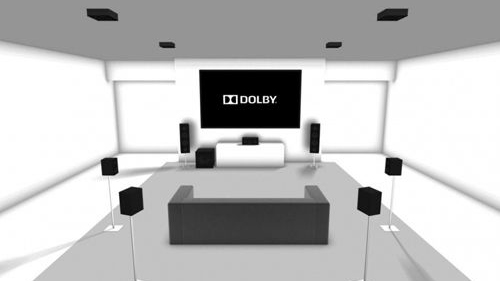
Up to 400 speakers can be used in the top Dolby Atmos cinemas, but given that a cinema-style installation isn't a practical solution for most people, AV manufacturers have stepped in to make it realistic in the domestic situation – and even, in some cases, affordable.
If you plan to go the most convincing speaker package route, then a compatible AV receiver with the ability to decode an Atmos soundtrack is required. Most receivers that have come to market in the past five or so years support the format, even at the budget end, and the best news is you don't have to make holes in your ceiling to install height speakers (although that will typically create the best effect).
Instead, you can either install 'topper' speaker modules on top of your existing left/right speakers (one set, for a .2 configuration) and/or to your left/right front and rear/surround speakers (two sets, for a .4 layout), or you can just purchase a purpose-built Atmos speaker system. Either of these two methods see upward-firing drivers working to reflect sound upwards off the ceiling and towards your listening position to create a pseudo-overhead effect.

Pioneer was one of the first out of the blocks with its own complete Atmos speaker package, the S-73A, back in 2014 – and it's since been joined by the likes of Triangle, Kef, Klipsch, Focal, Jamo and Elac, among others.
A separate topper module was a genius idea for those who don't want to replace their existing speaker package but instead prefer to simply enhance it. KEF's Q8 Atmos module is one example, although if you're after something cheaper, check out Elipson, Polk Audio, Tangent and Eltax, all of whom have budget Dolby Atmos modules.
That said, if you aren't scared of installation then Lithe Audio offers WiSA-certified wireless Dolby Atmos ceiling speakers that can be integrated into a compatible pre-existing system.
Alternatively, Dolby Atmos Height Virtualization technology is available in select budget AVRs. This technology, discussed in more depth below, aims to simulate the overhead sound experience of Atmos through speakers at the listener level.
Even more accessible is the smaller-scale wireless Atmos speaker system, should full-sized speakers and an amp not be practical for your space or budget. The Sony HT-A9 may not be cheap but it's certainly more accessible than the speaker packages and amps mentioned above and is incredibly flexible and forgiving with placement. It earned five stars from us, so you know it'll perform brilliantly. The Bravia Quad successor is a slightly more qualified success but is still certainly worth checking out if that's the route you want to go down.
- Check out the best AV and home cinema deals
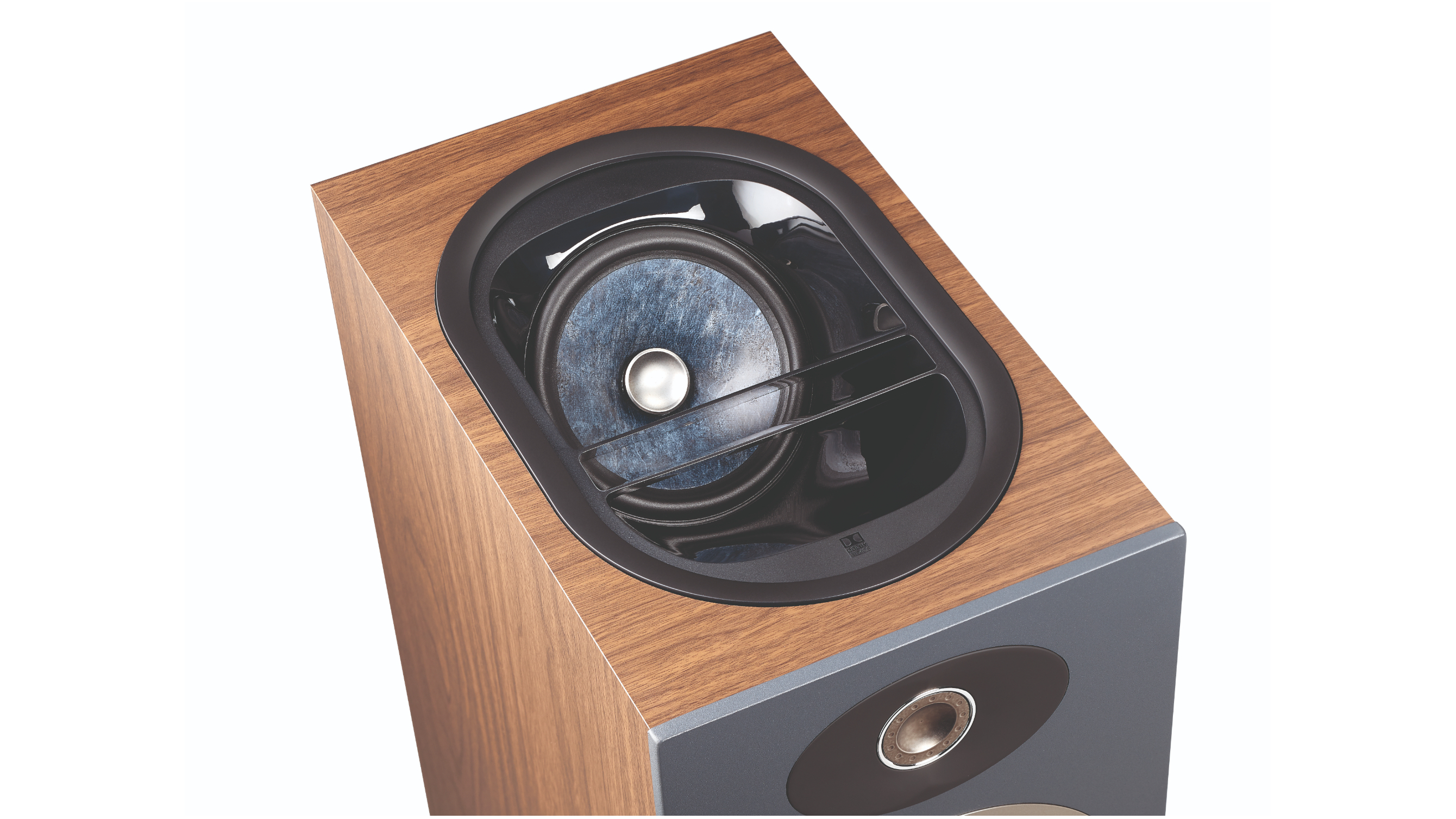
The most popular option, and requiring the least fuss, is a Dolby Atmos soundbar. The more serious examples include the Sonos Arc Ultra (£999 / $999 /AU$1799), Sony Bravia Theatre Bar 9 (£1399 / $1400 / AU$1795) and Sennheiser Ambeo Max (£2199 / $2500 / AU$4000), which have upward-firing drivers and offer a pretty convincing Atmos presentation considering their single, space-efficient size. No holes in the wall, no trailing wires all over the room, and no full-sized speakers in every corner of it. The downside? Not as convincing surround and overhead sound.
There are even Atmos soundbars costing just a few hundred pounds/dollars, such as the Sonos Beam Gen 2 (£449 / $450 /AU$699). These speakers don't have upward-firing drivers but instead deliver a virtual Atmos sound by deploying psychoacoustics to trick the listener into hearing a more immersive soundfield. Again, the Atmos experience is diluted here, but the best examples create a surprisingly noticeable effect that makes them more attractive than a 'normal' budget soundbar.
If you're prepared to put up with a few additional speakers, the soundbar package is arguably the best way to get Dolby Atmos at home without going down the AVR with speakers or wireless Atmos system routes. These usually consist of a soundbar with wireless surround satellites and a wireless subwoofer. The Samsung HW-Q990D is the best current example, but there are also rivals from the likes of Yamaha and JBL. Many individual Atmos soundbars, such as the aforementioned Sonos Arc Ultra and Sony Bravia Theatre Bar 9, can also be combined with matching wireless surrounds and subwoofers, but buying the whole lot will usually cost a lot more than buying the Samsung Q990D package.
So just to summarise your options here, in order of general superiority:
- AVR + full-size speakers + Atmos in-ceiling speakers
- AVR + full-size speakers + Atmos module toppers
- Atmos wireless speaker system
- Atmos soundbar package
- Atmos soundbar

So your speakers or soundbar can handle Dolby Atmos, but what about your Blu-ray Player and TV?
To playback Atmos, a 4K Blu-ray player must conform to the latest specifications and output a bitstream audio signal for your AV receiver to decode. Dolby Atmos is commonly supported on 4K Blu-ray discs, but more and more non-4K discs support it too. Atmos is also not just limited to Blu-ray players specifically, as both the Xbox Series S and Xbox Series X support Dolby Atmos. PlayStation 5 support is slightly more complex: for Blu-ray discs it has supported Atmos since launch, but system-wide Atmos support only arrived via a subsequent software update – this includes Atmos for gaming via HDMI eARC.
TVs increasingly offer Atmos support from their own internal speakers but, let's face it, that's not the same as having a room full of speakers, and most TVs can't fire audio overhead. But LG, whose OLEDs have included the technology since 2017, claims the general quality of the audio is still an improvement over a standard stereo signal. You'll find Atmos support on its latest LG G5 and C5 OLED models, as well as their predecessors from the past three years.
Rival manufacturer Samsung took a bit longer to join the party, only adding the feature to its TVs in 2022. With Samsung's ‘Q-Symphony' technology these top channel speakers don't need to languish unused if you then decide to go the Dolby Atmos soundbar route, as the TV's drivers can be integrated into any one of the brand's premium range of Dolby Atmos soundbars creating an even taller, more dispersed sound.
Many other manufacturers from Panasonic to Bang & Olufsen have introduced either inbuilt height speakers or soundbars to their TVs to add some height to audio proceedings, but as yet we haven't heard anything that beats the best Dolby Atmos soundbars available right now.
What about Dolby Atmos Height Virtualization?
No Atmos speaker set-up or soundbar, no Atmos experience? Not quite. In realising that not everyone can afford dedicated Atmos speakers/soundbars – and no doubt in an effort to expand the reach of the technology – Dolby created processing designed to create a ‘virtual’ Atmos experience from regular, non-Atmos-supporting hardware.
Dolby Atmos Height Virtualization, for example, aims to simulate the overhead sound experience of Atmos through speakers at listener-level, i.e. not overhead. Like DTS:X's sibling DTS Virtual:X, it’s designed to create an immersive, 360-degree sound field from a 5.1, 7.1 or even stereo speaker configuration.
The technology works by applying height cue filters to overhead audio components in a mix before it is dished out to speakers in front of the listener. Dolby says these filters "simulate the natural spectral cues imparted by the human ear to sounds arriving from overhead… special care has been taken to equalise the associated filters so that the timbre of the audio remains natural anywhere in the listening environment".
Several output configurations are supported. For example, using two to seven listener-level channels to create the sensation of either two or four overhead speakers. Dolby Atmos Height Virtualization is available on product categories from AVRs to soundbars and even headphones.
Dolby Atmos movies

Loads of films have been produced in Dolby Atmos since 2012 and many have made their way to Ultra HD 4K Blu-ray, too, with the likes of Avatar: The Way of Water, Dune, Dune: Part 2, Top Gun: Maverick, No Time to Die, The Creator, Nope, Blade Runner 2049, Roma, Mad Max Fury Road, Avengers: Endgame, The Batman and Tenet among the best releases of recent years.
There are currently over 40 cinemas in the UK and Ireland that are fitted with Dolby Atmos technology (including the Empire Leicester Square in London) and over 7800 screens worldwide. You can see a full list of Dolby Atmos cinemas on the Dolby website.
The first Dolby Cinema in the UK was the Odeon Luxe Leicester Square. It includes an 800-seat auditorium, which features no fewer than 400 Dolby Atmos speakers combined with 'spectacular Dolby Vision technology'.
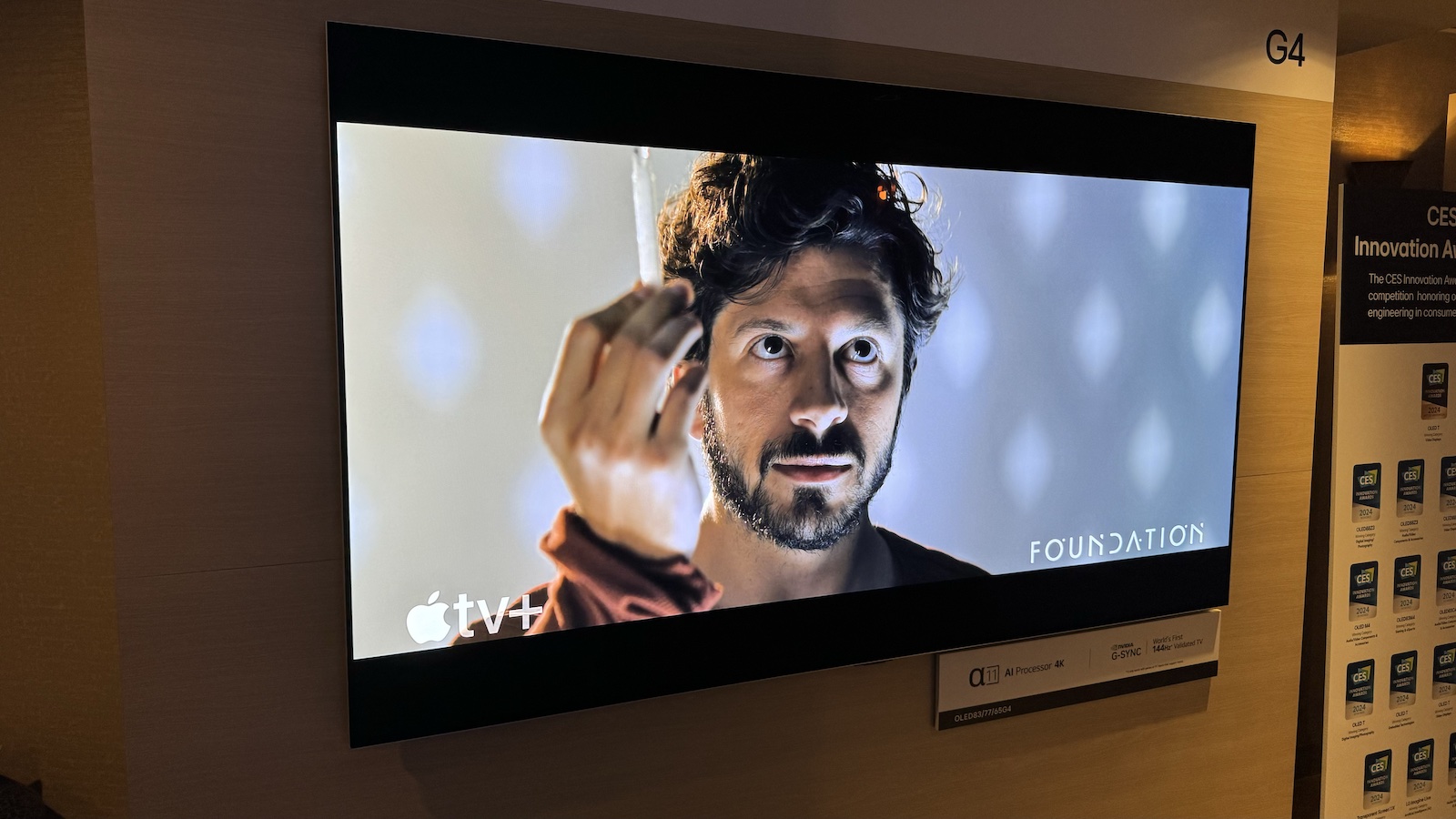
Aside from the disc, Dolby Atmos titles can be found on most of the major streaming services.
Atmos is available through the Netflix app for subscribers to its top tier across most devices. All Netflix Originals now include a soundtrack in Atmos.
Disney Plus also serves up plenty of films, including all of the Star Wars feature films, in Atmos, though full support has been inconsistent across operating systems, with Android TVs historically missing out.
Meanwhile, Amazon Prime Video features far fewer Atmos titles, but device support is again pretty broad; if you're looking to try it out, check out the Jack Ryan TV series.
Beware: in 2024, Amazon started charging extra for Dolby Vision and Atmos on Prime Video. While the introduction of adverts might have dominated the headlines, it also quietly dropped both Dolby technologies from the ad-supported tier. That means if you want to enjoy Prime Video with Dolby Vision and Atmos, it'll cost you an extra £2.99 / $2.99 a month.
For a great selection of films to buy or rent in Dolby Atmos, Apple TV has you covered. Most titles available through Apple TV+, including most Apple originals (such as Foundation, pictured), support Dolby Atmos. And the Apple TV store perhaps offers the most extensive collection of Atmos titles to rent or buy anywhere.
In the UK, Sky also offers a wide choice of Dolby Atmos content for owners of a Sky Q box or Sky Stream puck with a Sky Cinema subscription and access to the Sky Store.
Away from films, you can enjoy lots of other content in Atmos. This includes live sports (mostly football) broadcasts via BT's top-tier Total Entertainment package or Sky Q, and lots of PC, Xbox and PS5 games, including Forza Motorsport 8, Cyberpunk, Returnal, Hi-Fi Rush, Alan Wake 2, Dead Space, Marvel's Spider-Man 2 and Resident Evil 4.
Dolby Atmos on mobile

Dolby Atmos is supported by tablets such as the Amazon Fire HD 10 via connected headphones, although this obviously won't be on the same level of immersion as a soundbar or surround sound system! You'll also find Atmos support on Apple's range of iPads, including the iPad Air (5th Generation), iPad Mini (6th Generation), iPad Pro (7th Generation) and iPad (10th Generation), as they are intended to work with Apple Music's host of spatial audio tracks, which are powered by Atmos.
Atmos here works through 'binaural headphone rendering' and 'object-based audio’. Binaural headphone rendering creates surround sound through headphones via heat-related transfer functions (HRTFs). To explain how this works, Dolby gives an example of a car honking its horn: if it honks to your right, your right ear gets the full blast, while the left ear gets a less intense sound because the sound has to travel around your head. The brain recognises the differences, telling you to look to your right to see if the car is near you.
Dolby has essentially reversed this process to create virtual surround sound from the single speakers in headphones, producing the effect that sound is coming from all around you.
'Object-based audio' is the foundation of Dolby Atmos. Each sound in a scene has information explaining where it should be placed in the speaker configuration, and Dolby claims to have married these two technologies together to create a virtual, enveloping surround-sound experience on a mobile platform.
As for compatible smartphones, the Sony Xperia 1 VI and 10 VI, Samsung Galaxy S24 series*, and many more come with Dolby Atmos processing for a wider sound experience. Regarding iOS devices, Atmos is available on iPhones launched since 2018, including of course the iPhone 16 Pro.
And you can now get Dolby Atmos in your cans too: the Apple AirPods Max and Microsoft's Xbox Wireless Headset both boast Dolby Atmos without all the speakers, and they're just the start. Apple Music's Spatial Audio with Dolby Atmos feature works with any headphones.
*Interestingly, Samsung and Google announced a Dolby Atmos rival called Eclipsa Audio at CES 2025. The open-source (license-free) alternative will reportedly be available on all Samsung 2025 TVs, while YouTube will be the first platform to gain support for the audio format. But it was strange that Eclipsa Audio wasn't mentioned during the Samsung Galaxy S25 phone launch in January.
- Best smartphones: best phones for movies and music
Dolby Atmos in music
Dolby Atmos isn't only limited to movie soundtracks; Dolby also increasingly has music on its mind.
Admittedly Dolby Atmos Music got off to a slow start with the first Blu-ray Audio disc in Atmos arriving way back in 2015 (it was mostly remixes), but in recent years increasing numbers of Dolby Atmos-mixed tracks have become widely available thanks to the format's now-familiar presence on streaming services.
This is partly down to Dolby's 2019-penned partnership with Universal Music Group to bring 'thousands of songs transformed in Dolby Atmos from a diverse list of artists across a wide range of genres, from hip-hop, pop, and rock through jazz and classical music.'
An increasing number of tracks in Dolby Atmos can be found on Tidal, Amazon Music HD and Apple Music (Apple prefers to call its streams 'spatial audio', but Dolby Atmos technology is behind them to a large degree.)
There are now Atmos remixes of everything from Justin Bieber to Papa Roach, but the very first tranche of 50 releases in Dolby Atmos was a touch more acclaimed and included Kraftwerk's 3D The Catalogue, Hans Zimmer's Live in Prague and R.E.M.'s Automatic For The People (25th Anniversary Edition).
Outside of re-releases, the format has the greatest potential for live and jam-based styles and original EDM. The first electronic album specifically written and produced for the format was Wolf by trance pioneer Matt Darey. Meanwhile, German record label Mindmap has also released a special immersive audio compilation mixed in Atmos (available on Tidal) by Fritz Hilpert, who was nominated for the "Best 3D Surround Sound Album" at the 2017 Grammys. The electro-soul compilation features renowned international electronic music artists, such as Berlin-based electro duo Booka Shade.
Dolby Atmos Music isn't just limited to recordings either. London's Ministry of Sound nightclub has been kitted out with a 60-speaker, 22-channel Dolby Atmos system. DJs now have the tools to more literally raise the roof – they can make Atmos mixes and edit them in real-time so certain elements track movements around the room.
While the learning curve for engineers and composers transitioning from stereo to Atmos is steep, organisations including Dolby, Avid and the Abbey Road Spatial Audio Forum are actively encouraging artists to create in the format. There are free tools such as AvidPlay that let artists self-distribute their music in Dolby Atmos to streaming services and Waves Nx plugins that let users virtually mix in Atmos over headphones. Hopefully, the more access creators have, the more original tracks will be released that push the format in the way that film sound designers have been doing for several years.
- The problem with Dolby Atmos music is its inconsistency
- 11 of the best spatial audio tracks in Dolby Atmos on Apple Music
- Michael Stipe says R.E.M. in Atmos is "breath-taking" – and we agree
The future of Dolby Atmos
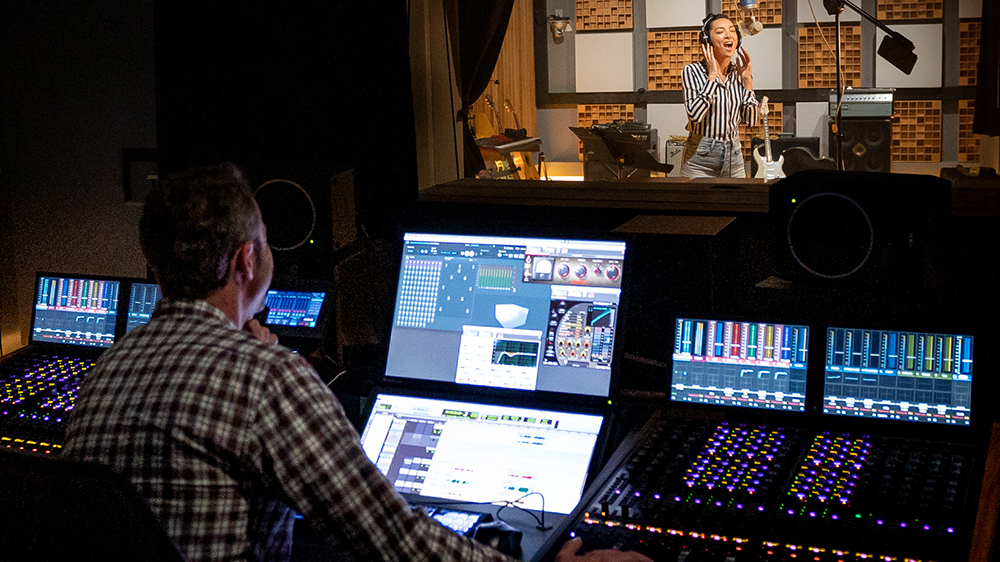
So where else do we want to see Atmos? Virtual reality appears to be a growing area of interest for Dolby. As supported above by the Atmos Height Virtualisation technology, the company is designing tools to deliver Atmos soundtracks in a virtual (and therefore more accessible) experience. Apple's Vision Pro AR headset – which went on sale in the US in February 2024 – is equipped for Dolby Atmos.
More music in Atmos appears to be a priority of, and potential area of growth for, Dolby too.
There's no doubt the all-encompassing, Atmos- and Vision-supporting Dolby Cinema venture will continue to spread as studios look to encourage customers back into theatres. Dolby Atmos has even made its in-car debut with the Lucid Air electric vehicle as part of a 21-speaker Surreal Sound system. We've seen several manufacturers announce plans to offer immersive in-car audio experiences over the last couple of years and Dolby has announced a collaboration with Cinemo which (hopefully) marks the beginning of a car audio revolution.
Perhaps the biggest and most immediate area for expansion is more affordable hardware, though. While AVRs – both budget and high-end – are almost all on board, we'd like a greater choice of affordable speaker solutions and soundbars, as well as wireless speakers getting in on the act.
Will Google and Samsung's Eclipsa Audio, which unlike Atmos doesn't require a license to use, spoil Dolby's Atmos party? Maybe, but right now it's very early days in that journey.
MORE:
6 ways to get near-perfect Dolby Atmos sound in an imperfect room
The 30 best Dolby Atmos movie scenes to test your home cinema
The best Dolby Atmos movies of the decade (so far) to test your home cinema







